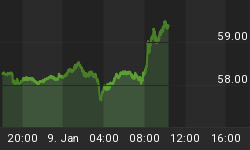There's an old and commonly repeating saying that "history repeats." This saying is so heavily quoted that it has almost completely lost its impact for most of us. Yet there is such profound truth in this statement that it's worth repeating. This is especially true of financial history. Precisely because men and women tend to forget the financial transgressions of their predecessors, history really does repeat itself over and over in the markets.
At major market bottoms, it's not uncommon for bearish investor sentiment to reach abnormal extremes. Market lows are typically accompanied by bearish pronouncements in major news periodicals, front page magazine depictions of grizzly bears, and books with bearish themes making the best-seller lists. A case in point: The books Rich Dad, Poor Dad, and Conquer the Crash by Robert Prechter were among the more prominent financial titles at last year's market low.
Now I have no intention of casting stones at either one of these books, which are both well-written and make interesting cases that are worth hearing. But I maintain that the primary value of such books is that of timing, viz., WHEN they appear along the market cycle is often more important than WHAT they contain.
In the case of Mr. Prechter's book, Conquer the Crash, I agree with the opinion of Dr. Martin Weiss, who proclaimed it "A must-read book." ...but not for the reasons that most reviewers have recommended if for. You see, I believe there is a very powerful, but hidden, message within the pages of this tome that few readers have discovered -- even though it stares them right in the face!
The startling message of this book (which I'm sure the author did not intend to convey) is that the 2002-2003 in the U.S. marked a major bottom in U.S. equity and commodity markets. This falls under the category of "history repeats." The evidence for this history-repeating financial phenomenon is found on page 26 of Conquer the Crash, and again on pages 202-204. You should read this book for these four pages alone! It shows a series of charts from the 1930s bull market in stocks and commodities (and yes, believe it or not, there WAS a post-Depression bull market in the U.S. financial markets at that time). The recovery in the U.S. financial markets took place from roughly 1933-1937. This was just after the Crash lows of 1932 in stocks and commodities and was brought to a conclusion by a massive infusion of liquidity into the markets by the Federal Reserve.
Fast-forward to the Crash of 2000-2002 and it's "déjà vu all over again!" More recently, the Fed has injected money into the financial system as never before with the result being a recovering bull market in stocks in commodities...just like in the 1930s! After the 2002 low, stocks and commodities rallied in tandem throughout 2003 (as in 1933) and, just like the following year of 1934, we find that so far the year 2004 has seen a consolidation/correction in the runaway, inflation-driven stock and commodity prices from the previous year. And assuming we're in for a repeat of the general inflation-driven pattern of the 1930s, what does this bode for the remainder of 2004 and beyond?
In 1934, as I mentioned above, stocks and commodities corrected for roughly the first half of the year before eventually turning up again (albeit in a slow, grinding fashion). Then it was onward and upward for the better part of 1935. I expect 2005 to be bullish in a similar fashion to 1935. This is especially true since (as I've pointed out in many previous commentaries) the fifth year of every decade always sees overall rising stock prices due mainly to the 10-year cycle having bottomed the previous year).
Even though the 10-year cycle was coming down hard into late 1934, the fact that the 12-year cycle had bottomed previously, not to mention the fact that a major generational crash had just completed, gave stock and commodity prices a bit of a lift and kept them from being overly bearish during the times of weakness. This is essentially what I expect for 2004 since the 12-year cycle bottomed two years previously and the 4-year "Presidential Cycle" is still peaking. This should combine to mitigate the impact of the 10-year cycle.
After the bullish year of 1935, stocks and commodities corrected again in 1936. In his book The Right Stock at the Right Time, author and famed market trader Larry Williams points out that the sixth year of every decade is typically not a good year, especially for stocks. This is no doubt partly explainable by the need for a corrective pullback and consolidation from the "five-year" bull market. But in the case of the coming year 2006, it will be the 8-year cycle that likely will account for most of the bearish action that year (remember the damage wrought by the previous 8-year cycle bottom in the second half of 1998?)
That brings us to 2007. It's predecessor year of 1937 was a blow-off peak year for stock and commodities. This is usually about what we can expect from a liquidity-driven, recovery bull market following a major recession or depression -- about 4-5 years of recovery before decline sets in again. Typically, the "seven-year" of any decade is bullish (see Williams) and I expect 2007 to be no exception, especially since the aforementioned 8-year cycle will have already bottomed. So basically what we have from the stock market and commodities price charts from 1933-1937 is an outline of what to expect for the 2003-2007 period. Even some of the chart patterns (especially in the Dow) from 1932-1934 are eerily similar to what we've seen traced out from 2002-2004 thus far.
After all, history repeats and the testimony of history bears adequate witness to what we can probably expect for the few years ahead in the financial markets, to wit, déjà vu all over again!















